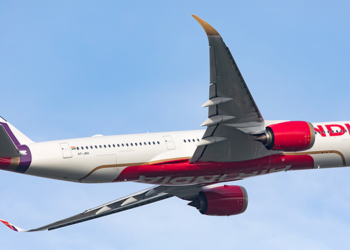Exciting news for air travelers in India as the Indira Gandhi International (IGI) airport in Delhi gears up to launch the country’s first-ever Elevated Cross Taxiway (ECT). In a recent tweet from the official handle of Delhi Airport, it was announced that the highly anticipated ECT will soon become operational, promising to revolutionize aircraft movement at the bustling airport.
The engineering marvel, constructed by Larsen & Toubro, features a 148-meter-long bridge section over the main road, known as the northern access road, connecting Terminal 3 (T3) and Mahipalpur. Additionally, a smaller 43.8-meter bridge has been built along the road adjacent to the T3-side airport boundary wall, leading to the area behind the Centaur Hotel. To accommodate the elevated taxiway, an underpass is being constructed on the existing road, allowing smooth passage for aircraft above it.
Currently, upon landing at runway 29/11 or during take-off, aircraft at IGI airport have to cover a distance of approximately 9 kilometers. Passengers are required to remain inside the plane during this time. However, with the commissioning of the ECT, the taxing distance for aircraft will be significantly reduced to just two kilometers. The aircraft will taxi along the taxiway parallel to runway 11/29 and utilize the ECT to take a direct path to Terminal 1, or vice versa.
Aside from the obvious benefits of reducing travel time for passengers and enhancing operational efficiency, the ECT is also expected to yield substantial environmental advantages. It is estimated that each time an aircraft uses the taxiing route provided by the ECT from Runway 29/11 to Terminal 1 and vice versa, airlines will save approximately 350 kilograms of fuel. This translates into a reduction of nearly 1,114 kilograms of CO2 emissions for every aircraft taxiing along this route, contributing to the ongoing global efforts to combat climate change.
As the countdown begins for the launch of the ECT, travelers eagerly anticipate the benefits it will bring, including reduced travel time, enhanced fuel efficiency, and a greener future for aviation in India.






















